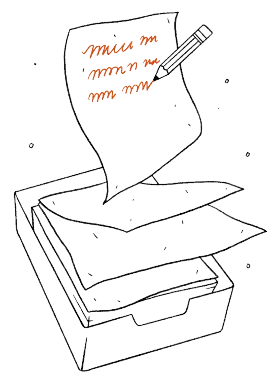“Please stay seated and stop jumping up when you raise your hand.”
“Why is your folder so disorganized?”
“I just gave the entire class directions. You really should pay more attention when I’m speaking.”
You may have experienced these comments as a young student with undiagnosed attention-deficit/ hyperactivity disorder (ADHD) or maybe even when your diagnosis was made known. Perhaps you were a new teacher unfamiliar with the symptoms associated with ADHD and trying to manage a classroom of students or a parent trying to maneuver multiple sources of information and advice. Historically, ADHD has been a controversial diagnosis with some questioning whether symptoms such as fidgeting, impulsivity, patterns of disorganization, and difficulty following directions, for example, as par for the course of childhood development rather than symptoms of a disorder. Yet it’s important to note some children have more severe symptoms than others and should not be treated as insignificant. Children diagnosed with ADHD may also have a co-occurring condition. According to the Centers for Disease Control and Prevention (CDC), more than a third of those diagnosed with ADHD also have a diagnosis of anxiety, and a similar number have a diagnosed learning disorder. Forty-four percent have also been diagnosed with a behavioral disorder. In 2024, the CDC reported that 11.4 percent of American children have been diagnosed with ADHD. This includes 15.5 percent of adolescents, 21 percent of 14-year-old boys and 23 percent of 17-year-old boys. Seven million American children have received a diagnosis of ADHD, an increase from six million in 2016.
- Boys (15 percent) are more likely to be diagnosed with ADHD than girls (8 percent).
- Black children and white children are more often diagnosed with ADHD (both 12 percent) than Asian children (4 percent). American Indian/Alaska Native children (10 percent) are also more often diagnosed with ADHD than Asian children.
- Approximately 6 percent of Native Hawaiian/Pacific Islander children are diagnosed with ADHD.
- Overall, non-Hispanic children (12 percent) are diagnosed with ADHD more often than Hispanic children (10 percent).
New data is emerging regarding the scientific understanding of ADHD and how it’s being treated in doctors’ offices and clinics. Additionally, some scientists now say that the traditional understanding of ADHD as an unchanging fact—something you simply have or don’t have, “something wired deep in your brain”—is both inaccurate and unhelpful. Most scientists, however, agree that the condition is produced by some combination of biological and environmental factors. Yet, we have students who currently have this diagnosis and require much needed treatment, including but not limited to strategies, interventions and/or accommodations to help them meet the daily challenges of schoolwork as well as peer and adult interactions.
Children with ADHD are at increased risk for mental, behavioral, and emotional concerns and disorders, including:
- Behavior disorders, which may increase the risk of interpersonal violence and delinquent behavior;
- Mood disorders, including anxiety and depression;
- Being the victim of bullying;
- Using tobacco and other high-risk substances;
- Suicide; and
- Sexual behavior that is risky.
There isn’t a cure for ADHD but those with ADHD may experience mental health recovery, which manifests as the ongoing management of symptoms. Per the Substance Abuse and Mental Health Services Administration, the two main hallmarks of mental health recovery are living a “meaningful life” and growing toward one’s “full potential.”
The actual treatment is age dependent and involves multiple supports, including medical, behavioral and psychological. Treatment may include:
- Parent training;
- Medication;
- Skills training;
- Counseling;
- Behavioral therapy;
- Educational supports; and
- ADHD education.












